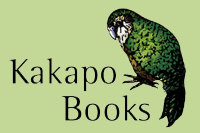|
The essays in this collection are expanded versions of papers originally given during a symposium held at the University of La Rochelle, France, in June 2005. This event was the third annual meeting of an informal research group working in the field of Australian and New Zealand Studies. For the first time in the short history of this group, the 2005 symposium attracted a majority of papers on New Zealand. This collection mirrors that balance. The theme of the event – “Stories/her-story/his-story/History” – indicated the general area speakers were invited to explore, perhaps most pointedly the relationship between individual life stories and official history, which lies at the heart of the postcolonial debate.
The first part of the work, which is devoted to New Zealand, contains five articles. The first essay provides an exploration of New Zealand identity since the end of the twentieth century. Corinne David-Ives traces the way the state-endorsed Waitangi Tribunal sought to heal the wounds of the colonial past by creating an official space where the Maori could recover their voice, challenge the colonial historical narrative which had excluded them, and participate in the rewriting of an official postcolonial New Zealand History that includes both Maori and Pakeha.
Christine and Peter Tremewan offer a new angle on the
postcolonial project which consists of recovering the voice of the colonised people. Their article reveals the existence of a treasure trove of documents written by both Maori and Pakeha in the twenty years following the signing of the Treaty of Waitangi. These documents offer valuable insights into cross-cultural exchanges.
Alex Calder’s article analyses Herbert Guthrie-Smith’s, Tutira: The Story of a New Zealand Sheep Station, first published in 1921.This work is an ‘eco-history’, a record of the day-to-day changes made to one tract of land – Tutira – at the hands of both Pakeha and Maori, over a period spanning several decades. Calder argues that, despite the attitudes prevalent when Guthrie-Smith was writing, he did not fall into the “cartoon binaries” of colonised/coloniser in his narrative representation of the relations between Pakeha and Maori on Tutira. Nor did he fall into that other binary, still prevalent today in representations of differing Maori and Pakeha relations to the land, namely the opposing narratives of ecological “improvement” and “ruination”.
Sarah Shieff’s essay considers Where’s Waari? A History of the Maori through the Short Story, an anthology of short stories collected by Witi Ihimaera and published in 2000. Each of the short stories, written between 1901and 2000, offers a narrative representation of Maori identity. The earlier ones are written by Pakeha and frequently represent Maori in accordance with colonial stereotypes. Maori writers recover their voice and begin to represent their own people in this medium in the 1970s. Stories from this point deconstruct colonial stereotypes and represent multiple, very different ‘Waaris’, thus revealing that, Maori identity is not immediately recognisable.
Claire Bazin’s essay opts for a more private and literary approach to the issues of narration and identity construction. It addresses Janet Frame’s autobiographical trilogy, tracing her fraught personal journey from otherness and exclusion, to institutionalisation (and a near escape from lobotomy), and through to inclusion in the New Zealand literary canon. The article underlines the way in which linguistic creation and narrative construction heal the wounds of her-story.
The second part of this collection, devoted to Australia, contains three articles exploring representations of Aboriginality and Australian identity. It begins with an essay by Sue Ryan-Fazilleau, which compares representations of Aboriginality in four crime novels which go against the grain by offering the detective’s role to indigenous protagonists. Two of these novels are by black authors – Philip McLaren’s Scream Black Murder and Mudrooroo’s Wildcat Screaming – and two by white authors – Gabrielle Lord’s The Sharp End and Arthur Upfield’s Man of Two Tribes.
The second article in this section, by Sunny Singh, approaches the issue of Aboriginality from a more writerly angle. It focuses on two novels by Aboriginal authors: The Kadaitcha Sung by Sam Watson and Plains of Promise by Alexis Wright. A novelist from a postcolonial country, Singh concentrates on the creative problems the two writers must resolve in order to see their postcolonial project through. For instance, she underlines the delicate balance they must strike between their desire to represent the social ills of contemporary Aboriginal society and the danger of reinforcing colonial stereotypes.
Finally, Margaret Farmer’s essay moves outside the field of
narrative representation to focus on an art exhibition: Terra Alterius: Land of Another. Twelve Australian artists – indigenous and non-indigenous – were invited to imagine the kind of society that might have resulted from interaction between the British and the Aborigines had the former regarded Australia as terra alterius – ‘land of another’ – rather than terra nullius – ‘land of no-one’, that is to say, had they viewed the ‘other’ culture as having an intrinsic value equal to their own. In this article, Farmer offers reflections on the nature of the differences between historical narrative and artistic representation.
|

